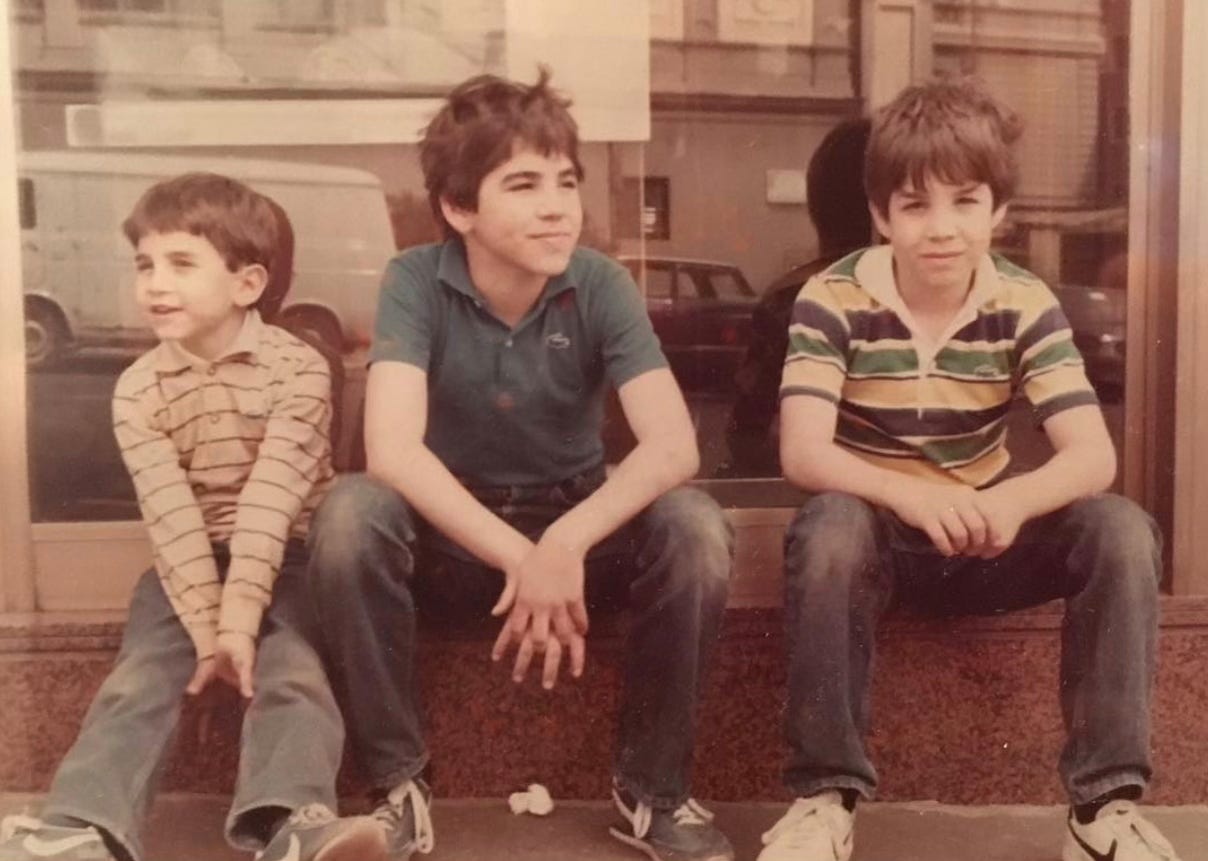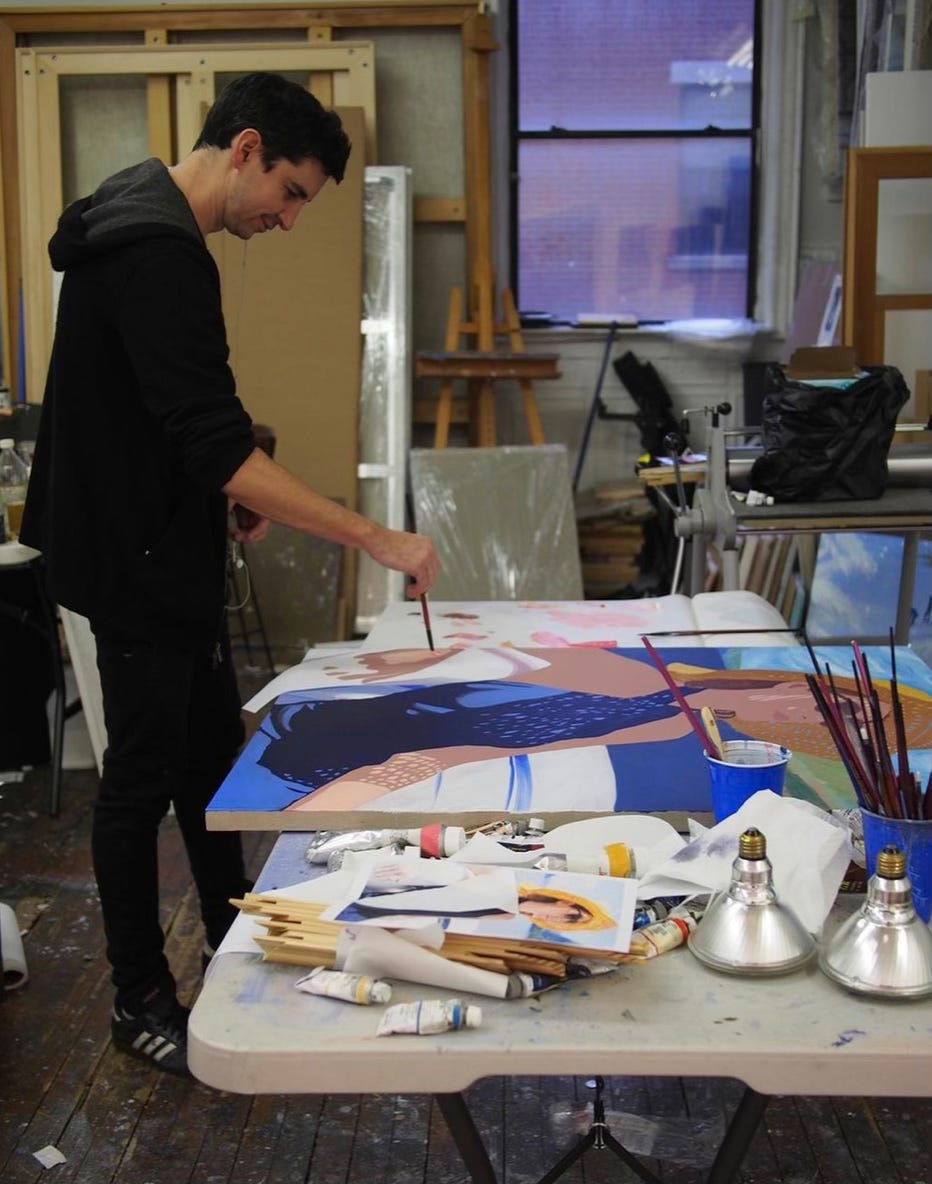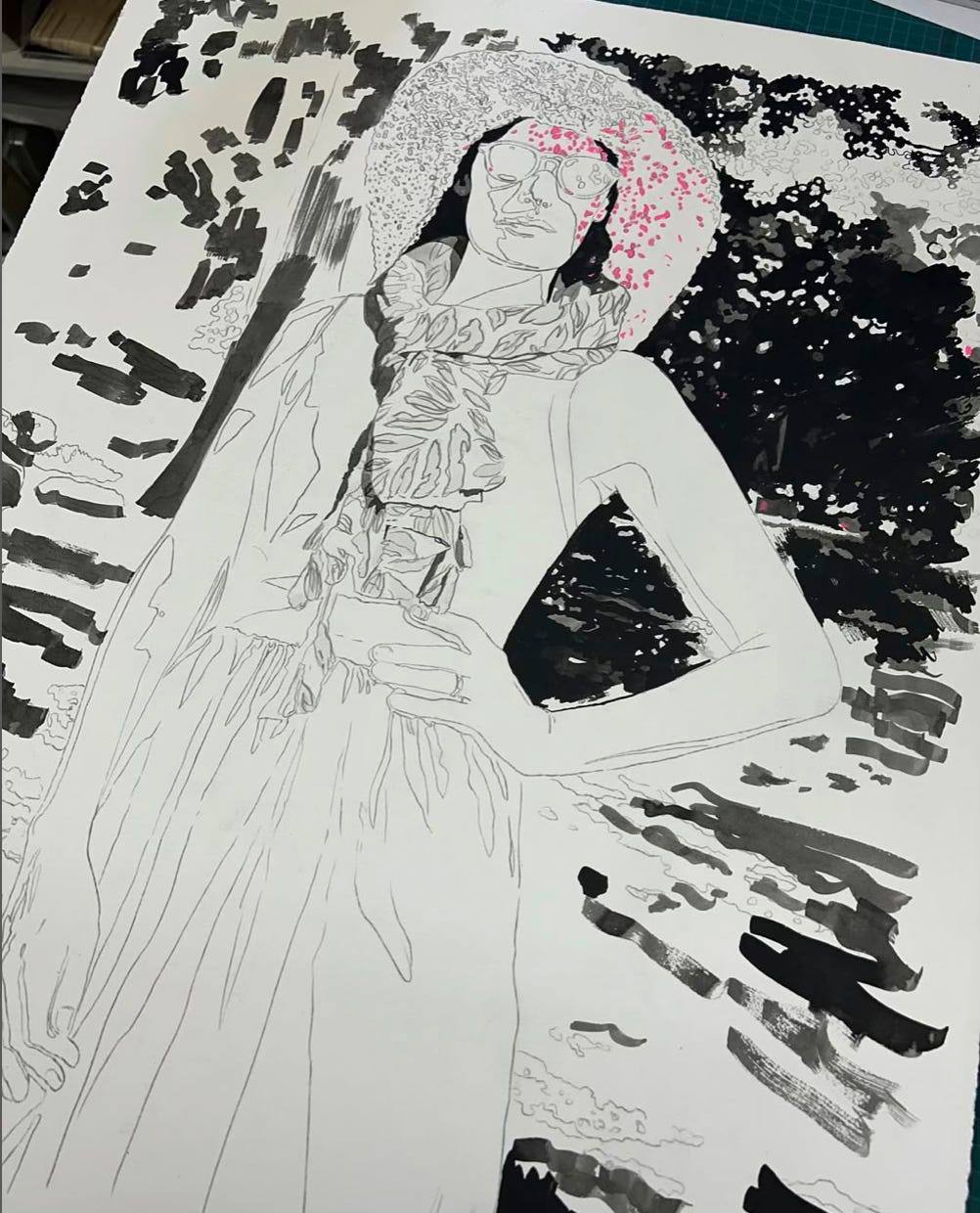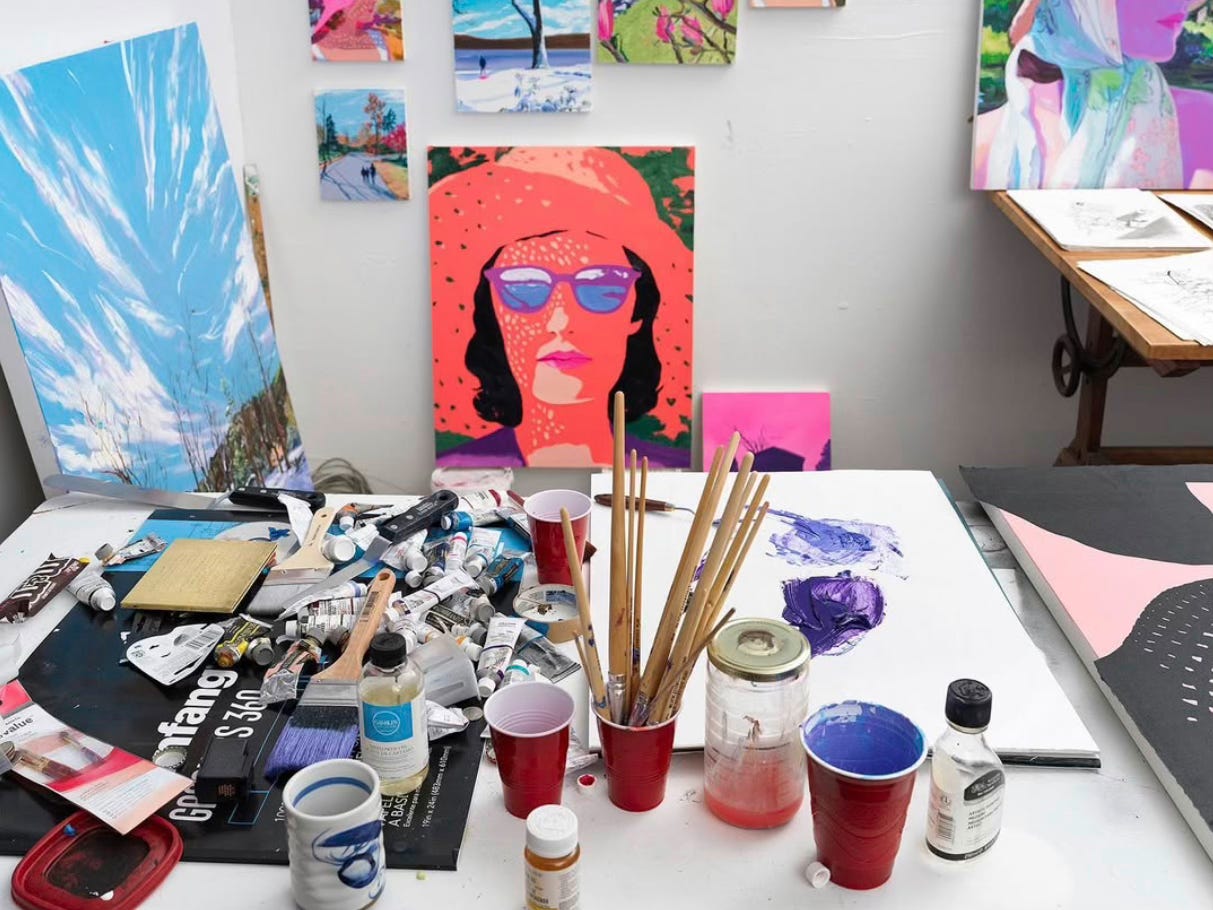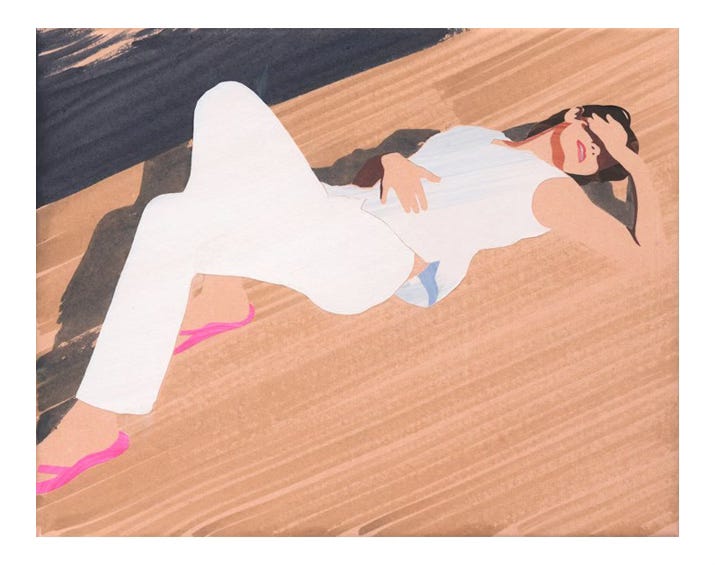Sebastian Blanck
"I trust my hands. I trust my eyes. I’m satisfied when my hands finally answer every question my eyes had."
Sebastian Blanck (b. 1976 in New Haven, CT) received his Bachelor of Fine Arts from the Rhode Island School of Design, Providence, RI and, in 2001, was selected as a visiting artist at the American Academy in Rome, Italy.
Blanck’s work has been the subject of recent solo exhibitions at Miles McEnery Gallery, New York, NY; Michael Reid Gallery, Berlin, Germany; Tayloe Piggott Gallery, Jackson, WY; Dowling Walsh Gallery, Rockland, ME; Ille Arts, Amagansett, NY; Baldwin Gallery, Aspen, CO; De Buck Gallery, New York, NY; Dubner Moderne, Lausanne, Switzerland; and Wetterling Gallery, Stockholm, Sweden.
He has been included in recent group exhibitions at Wetterling Gallery, Stockholm, Sweden; The Bo Bartlett Center, Columbus, GA; LAUNCH F18, New York, NY; Miles McEnery Gallery, New York, NY; Site:Brooklyn Gallery, Brooklyn, NY; Dubner Moderne, Lausanne, Switzerland; De Buck Gallery, New York, NY; Lepore Savage Gallery, New York, NY; Wallspace, New York, NY; Scott White Contemporary Art, San Diego, CA; Werkstatte, New York, NY; and Carl Hammer Gallery, Chicago, IL.
MEPAINTSME: There’s a little history between us as we crossed paths some 36 years ago, I thought it would be cool if you describe your memory of it. What was it like growing up in Baltimore? How did your path begin as an artist and musician?
SEBASTIAN BLANCK: My family moved around quite a bit when I was a kid but the majority of my childhood was spent in Baltimore, Maryland. Our house was in a downtown neighborhood called Bolton Hill a few blocks away from the Maryland Institute or Art. When I was six my mother enrolled at MICA as a fiber major. As soon as she started there I knew I’d rather be at an art school than an elementary school. It was a place that I was magnetically drawn to. Luckily for me, my summers were spent swimming at the local pool and attending art classes at MICA. One of the few MICA dorms at the time was on a street where many of my friends lived. It was also next to a park where we played almost everyday after school.
My friends and I often befriended the new class of freshman each year. That is how the two of us met. SO you must have been 18 or 19 and I was 11 or 12. I believe I may have even brought a portfolio of my drawings to the park to show you. It was filled with drawings of comic book characters. You (and a couple other of the residents of the dorm) patiently looked through my work and were very encouraging. You in fact gave me one of my favorite art books of all time, How to draw the Marvel Way. I still have it. The cover is torn off and the pages are a little tattered but it is not in terrible shape considering how many times I read and looked through it.

I really loved growing up in Baltimore. It is a unique city and Bolton Hill is a beautiful neighborhood. I definitely identify it as my hometown though my family also lived in Connecticut, Arizona, Rome, and Brooklyn. Actually Brooklyn was where I finished high school.
MPM: Where did you end up going to school?
SB: When my family first moved to Brooklyn in 1992 I was kind of pissed. I was too upset about leaving my friends behind to understand how cool it was to live in New York. It took me a few years to catch on. The best part of the move initially was that my new high school had art classes. That hadn’t been a part of my education in Baltimore where I'd attended a math and engineering high school which was a terrible fit for me. The most artistically leaning class they offered was mechanical drawing. It was drawing for Industrial Design. No expression. All measurement and precision. Not my forte. Anyway, through my new art teacher in Brooklyn, a wonderful artist named Ken Rush, I was introduced to the Rhode Island School of Design. That is where I eventually went to art school.
MPM: And this is where you began playing music, as well? Can you give us a bit of background there?
SB: I started to play music when I was in high school and started my first band when I was 17. By then I was spending almost all my free time either painting or playing guitar, so RISD turned out to be the perfect fit for me. I spent all day in studio, then spent most nights with friends playing music or out at a show. The music scene in Providence at the time was really exciting. Most of the bands were very loud, experimental, and unpredictable. I was probably in five bands during my time there. Some of those bands lasted for one show, some lasted a year. Black Dice was the one that managed to get the most traction. I started a band with Bjorn Copeland, who was my roommate, and his younger brother Eric in 1996. We didn’t officially become Black Dice until Hisham Bharoocha joined in either late ‘96 or early ‘97. We were all music obsessed so it just made sense that we’d start playing together. Bjorn was writing most of the material and I was just happy to be in a band that was regularly playing shows and recording. It was also just a way to hang out with my closest friends and work on something together. Starting in 1997, Fort Thunder became the focal point of the local music scene. We played there a bunch of times. I have very fond memories of my time in Providence. I am someone who has a lot of energy. I am happiest when I’m busy. I think a lot of people who were in Providence at the time were similar. Making art, making music. No one really separated those two activities.
MPM: My partner also attended RISD around that time (maybe a year or two later) and shared a lot of stories about the music scene around Fort Thunder. Do you still make music with Black Dice? What other music have you done and are currently working on?
Sebastian Blanck "Thunder" Live with Caroline Polachek; Vocal, piano, 2010
SB: I don’t play with Black Dice anymore. It’s been a long time since I was in the band but I consider them all brothers and we see each other fairly often. It was such a foundational time in my life and being in the band provided me with the chance to go on tour and see the country in a way I never could have otherwise. I still make music but I don’t participate in any of the grind that is a part of the life of a touring musician. I’m so grateful I got to do that in my 20’s. Damn it was fun! The music I make now is very different from Black Dice. To say it is more traditional would be a massive understatement. I actually really love playing heavy music but I don’t have the voice for it. I write songs for the type of singing voice I have. I play guitar using a lot of open tunings and my voice is fine but I am certainly not a power house singer. I follow the Elliot Smith, Iron and Wine, Nick Drake model. Pretty guitar. Quiet singing. I love making music. I’ve written and released seven solo albums. I’ll be releasing a new one sometime early next year. I write songs, record them, and release them. I don’t try too hard to get people to hear them. I’d love it if my songs found a wider audience but I’m too bust with family and paintings to work to get that to happen. Occasionally I play a show but just for fun. I see it as a chance to hang out with friends.
MPM: Can you explain why the music you created with Black Dice, which was (is) very dissonant and experimental, is so completely counter to your painting sensibility?
SB: When we started Black Dice in 1996 I already had a fairly confident understanding of what I wanted to paint. I’m not sure the same was true for me in terms of making music. I was searching to understand how to make music and be in a band. The best reason I can think of is having fun. Man we had a ton of fun in the early Black Day days. I think the sound and feel of Black Dice, while I was in it, was largely driven by the aesthetics of the Providence music scene. Loud, aggressive, and chaotic. That was the local dialect. When we played a show in Providence people had a good time. It was almost like party music. So were the other local acts. Lightning Bolt, Landed, Forcefield and Les Savy Fav were all pretty crazy. They were also all party bands. When we played outside of Providence people would freak out. Sometimes in a good way, but often in a bad way. After graduating from RISD in 1998 Black Dice moved to Brooklyn. The band made less sense to me there. I think it was the types of venues and the “professional” part of being in a band that I didn’t like. As clubs, labels, booking agents, and PR became involved I found it a lot more tedious. The novelty had also worn off. I did have a lot of fun on tour but was really frustrated about not being able to paint or see my then girlfriend, now wife, when we were on the road. I left Black Dice in 1999. I was painting as much as I could when I wasn’t on the road or working. By then I’d already been an assistant for the painter Alex Katz for about a year. He’d been very understanding about letting me go on tour. I’d leave for four to five weeks and when I got back to New York he’d let me come back into work.
MPM: That’s a great Segway into your relationship with Alex Katz. I assume he had an impact in your development as a painter?
SB: I started working for Alex a few months after I graduated from RISD. He had one other assistant at the time. A painter named Stuart Elster. He’d gone to Yale for Grad school and was far more knowledgeable about New York’s art world and art history than I was. I learned a ton talking with Stuart about art while we worked.
Seeing how Alex's studio functioned was really eye opening. Alex is a master technician. It was a real privilege to work there and gain insight into how he did things. It all started with the initial surface. That dictates the final look and feel of the painting. That is something I only had a vague understanding of when I was a student. Working for Alex also changed my understanding of how differently pigments in oil paints behave. For example, transparency or opacity of a pigment affects the way the paint reads once it is on the canvas. The tooth of a canvas can also alter the way an image works. Every choice matters even if the choice reveals that you don’t care. Tons of small decisions add up to a big difference in the end.
MPM: Do you have any memorable experiences as far as the first paintings you encountered that were formative and inspired you?
SB: I was very lucky to see a lot of art with my mother as a kid. She was an artist and took me to museums regularly. This was especially true when we lived in Rome and New York. My father took a sabbatical when I was in 8th grade and we lived in Rome for six months. I did go to school for part of the time that I was there but the first month was spent going all over the city with her. We probably went to the Vatican museum once a month but my favorite place was the Villa Borghese. I loved the Bernini sculptures. For a short time I wanted to be a sculptor. It wasn’t until I got to art school that I really gravitated to painting. It was a better fit for my personality and talents. The first painting I remember seeing, that really blew me away, was Edouard Vuillard’s The Album at the Metropolitan Museum of art in New York. I loved the unusual composition and intensity of the color. I was also attracted to the way the figures and the environment were one and the same. It was an atmosphere. There was no hierarchy placing figuration over abstraction or vice versa. They were partners. That idea is key for me when I am looking for things to paint. I enjoy sometimes leaning into figuration more and sometimes being more open ended and abstract. I’m happiest with my work when there is equilibrium between what some might consider opposite poles.

MPM: Your work shares a lineage to many great artists of the past like Edouard Vuillard, Pierre Bonnard, or even Fairfield Porter, whose primary subject, aside from light, is domestic life and everyday experiences. Were you always painting from life?
SB: Those three painters are some of my all time favorites. I also love Degas, Katz (of course), Deibenkorn, Matisse, Zorn, Sargent and so many more. I’ve have always looked to my direct experiences as subject matter. I certainly was most attracted to the work of artists who did the same. It most likely started there. I identified with that approach and adopted it.
MPM: A prominent subject in many of your paintings is your wife relaxing in the sun. can you tell us a bit about that?
SB: I love to paint. So why not paint the people I love the most. In some ways it’s that simple. I’ve always paintings those closest to me. My wife, Isca Greenfield-Sanders, and our children are my favorite subjects. I have no idea how many paintings and drawings of Isca I’ve made over the years. I’m forever grateful to her that she has been so generous and brave to pose for me since the beginning of our relationship. In both the shower curtain paintings and the sun hat paintings I've explored how two disparate visual occurrences mingle together to describe one form. I also think that those two motifs allow for formal and personal exploration, not just figurative and abstract image making. It still feels like fertile ground with limitless possibilities. Even so, I am always on the lookout for visual experiences that have a similar type of simultaneity.
MPM: There’s a clarity and simplicity to these moments that are echoed in your application of paint, communicating almost an ease to the work's creation. Is this deceptive? Is there struggle involved?
SB: As every painter knows it's never easy. Some paintings come together more quickly than others but who knows why? I’m happy they would read as easy going or as if they’ve been made without struggle. I’m not interested in getting credit for hard work. I’ve been painting for a long time now. Over 30 years. I employ all sorts of techniques and tricks that I’ve developed from working on paintings for that long. I use multiple approaches for the different types of images I make. Some are completely planned out and others are totally improvised. I use stencils, projectors, india ink, collage, oil paint, watercolor, and gouache. Sometimes I work from photographs, sometimes I just make stuff up. Once the painting gets going I do whatever it takes to make the image work. I’m trust my hands. I trust my eyes. I’m satisfied when my hands finally answer every question my eyes had.
When I’m making a painting I do my absolute best to keep the paint fresh. I think it relates to showing a clarity of choice. Ideally, the evidence of how I made the painting is plain to see. I put paint on a brush and make a mark on the canvas. I want it to create an image while retaining the physicality of paint. Again, it represents a kind of simultaneity.
I put in a lot of work to make them look unlabored. Typically, my first step is to make a preparatory drawing so I can best understand how to approach the image, and if I want to make it into a painting. Getting a first run-through makes the more intense decision making process while actively painting a little easier and filled with less pressure.
MPM: I’ve seen you use collage as a method of creating work, although the result is quite similar to your paintings, mostly because of their sharp edges and flattening forms. Are there stark differences when seeing them in person? What led you to experiment with collage, and did it influence your aesthetic in any way?
SB: The most obvious difference, and probably the most impactful, too, is that the scale is drastically different. The oil paintings can get quite large, but all of my collages are small. That’s mostly a symptom of the two types of media. Collage can’t scale up like oil paint can. I started making collages in college. After I moved on from the shower curtain series, which were all done using oil paint, I returned to making collages. That was around the same time that Isca and I had children. It was ideal work to make at that time because I could work on them one section at a time. So I’d work when our kids were asleep or at school, and be able to stop working the second I had to take care of them. That was the period when I made the most portraits, actually. Mostly of others artists and musicians. I think the collages translate pretty well to digital media. They are graphic. I got pretty obsessive and made some collages that had more than 1000 pieces of paper. They were massively time consuming. After a few shows of that work, I decided that the speed of production should better match the subject matter so I started working smaller and with more direct paint on the surface. With that approach I’d complete a piece in a day instead of a month. I really enjoyed making the more fast-paced collages. It forced me to be looser, which led me to place the hard-edge pieces of paper next to looser, more gestural marks. That work very directly led me to the sun hat images. In fact, I started making those images as collages. Some of the tactics used to make those pieces are the same that I use to make my most recent large oil paintings.
MPM: Thanks so much for chatting, it was fun catching up! I guess I should mention you have a beautiful ink drawing of Isca included in our current show at mepaintsme. Do you have any projects on the horizon you’d like to mention?
SB: I’m thrilled to be included in the Slight of Hand show. Thank you for asking me to participate in it and in this interview. I’m very honored and touched. It is really amazing to reconnect after so many years. I’ve never forgotten how nice you were to engage with me as an artist rather than some annoying neighborhood kid. So thank you again.
I have a solo show at Miles McEnery Gallery in New York which opens in January of 2025. I also have a new record coming out next year. I release music under my own name now. All of my albums are available on music streaming services. I also wrote and illustrated a manuscript that I’m trying to figure out how to publish but that’s really an ongoing project.
View Sebastian Blanck’s work in the group presentation Slight of Hand, currently on view at MEPAINTSME.



